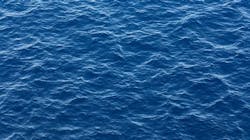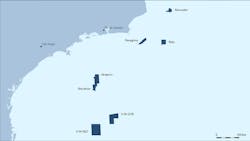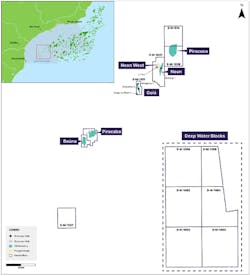Brazil bid round leads to multiple awards in three deepwater basins
NEW RELEASE:
Offshore Business Strategies Special Report 2025
This 2nd annual special report, published in June, shares insights from industry experts on how to navigate an evolving marketplace and the best tactics being utilized in the offshore oil and gas sector.
Petrobras and Exxon Mobil led the way in the latest offshore block awards issued by the ANP under Brazil’s 5th Permanent Concession Offer Cycle.
The two companies will be equal partners in 10 blocks in the Foz do Amazonas Basin. Petrobras will operate blocks FZA-M-1040, FZA-M-1042, FZA-M-188, FZA-M-190, and FZA-M-403, while Exxon Mobil will operate blocks FZA-M-477, FZA-M-547, FZA-M-549, FZA-M-619 and FZA-M-621.
In each case, the equity split will be 50:50.
Petrobras and Petrogal Brasil secure three blocks
Offshore southeastern Brazil in the Pelotas Basin, Petrobras and Galp subsidiary Petrogal Brasil bid successfully for blocks P-M-1670, P-M-1672 and P-M-1741. Petrobras will have a 70% operated stake in each case, with Petrogal Brasil holding the remaining.
The Pelotas Basin is thought to be a conjugate margin to the Orange Basin offshore Namibia, where Galp has made three large discoveries in the Mopane complex.
Petrobras said the overall value of the signature bonus that it is due to pay in October is about R$139 million. The Minimum Exploratory Program to be applied to each block was another major factor in the outcome of the auction, the company added.
“We managed to win the areas that were our priorities, offering bonus amounts within our economic premises," CEO Magda Chambriard said. “With these results and the continuity of our exploration activities, including in the Equatorial Margin and the Pelotas Basin, we remain optimistic about our chances of replacing oil reserves and ensuring Brazil's energy security.”
The results added close to 9,600 sq km to the company’s acreage offshore Brazil.
Equinor gets 100% of one block
Equinor bid successfully for 100% of the S-M-1617 Block in the Santos Basin, agreeing to pay a signature bonus of about US$5.5 million. The surrounding license is 400 km offshore in water depths of up to 2,600 m and 60 km from the company’s S-M-1378 Block.
It will now draw up a work plan for geological and geophysical assessments for future exploration activities.
Karoon Energy snags six blocks
Karoon Energy, the Australian independent already active in the Santos Basin, submitted a clinching bid for 100% interests in six blocks in the basin. Of these, S-M-974 and S-M-1038, roughly 17 km from the company’s Neon Field, contain the Piracucá discovery.
In addition, the company was offered four deepwater blocks (S-M-1484, S-M-1605, S-M-1358 and S-M-1603), close to its existing deepwater exploration acreage in the basin and 80 km southeast of its Baúna Field.
Formal confirmation of the awards should follow during the fourth quarter, subject to qualification conditions, payment of a bid bonus of about $14.8 million and providing a financial guarantee for about $6.1 million, equivalent to 30% of the minimum work program.
Karoon CEO and managing director Dr. Julian Fowles said initial technical studies of Piracucá indicate a potentially commercial tieback option to a potential FPSO based over Neon FPSO, subject to the Neon development proposal attaining FID and regulatory approvals.
The company viewed the other four deepwater blocks as a strategic move to consolidate its position in the area at a relatively low entry cost.
Shell, Chevron win additional exploration blocks
Shell’s Brazilian subsidiary won exploration rights for four exploration blocks in the Santos Basin, about 250 km offshore, according to industry reports. And nine other offshore blocks reportedly went to a consortium of the local subsidiaries of Chevron and CNPC.
About the Author
Jeremy Beckman
Editor, Europe
Jeremy Beckman has been Editor Europe, Offshore since 1992. Prior to joining Offshore he was a freelance journalist for eight years, working for a variety of electronics, computing and scientific journals in the UK. He regularly writes news columns on trends and events both in the NW Europe offshore region and globally. He also writes features on developments and technology in exploration and production.




